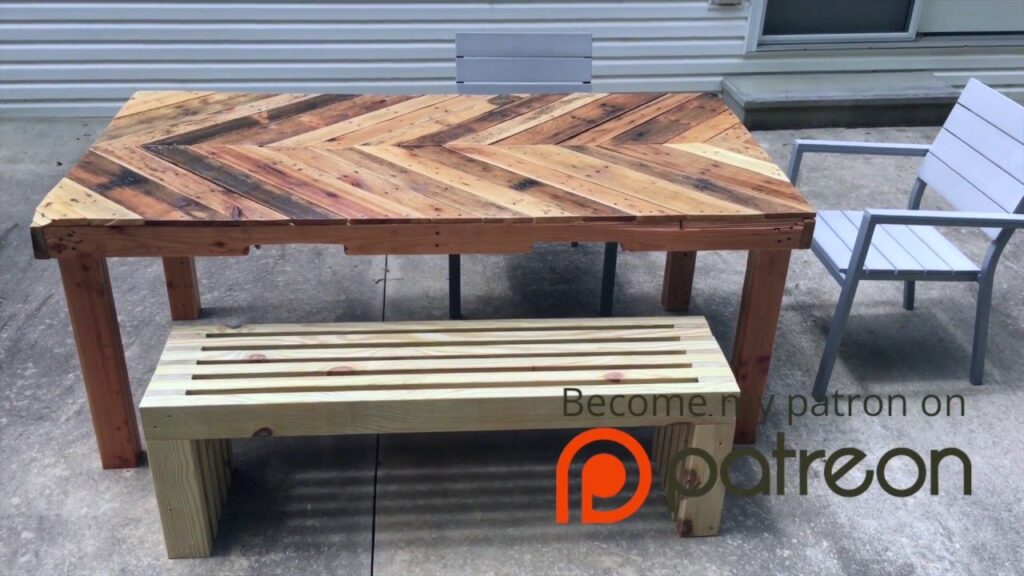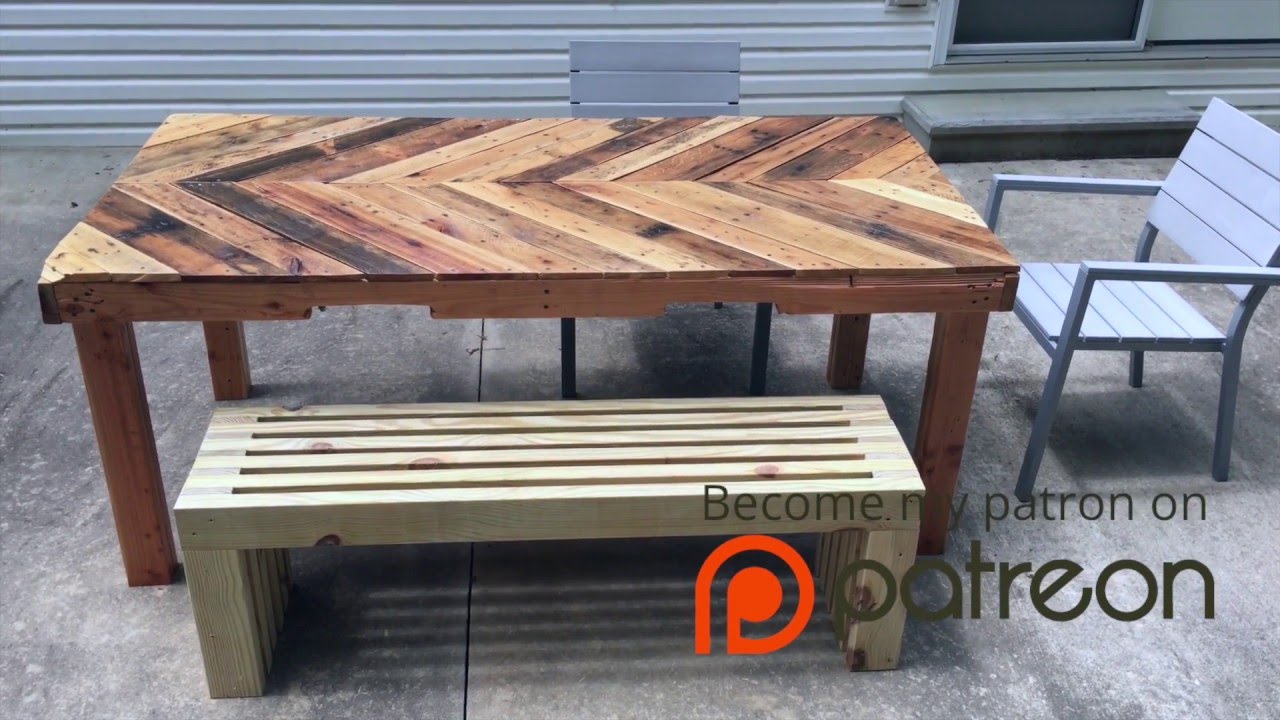In this article, “How To Build A Modern Outdoor Bench”, you will learn the step-by-step process of constructing a simple and stylish bench for your outdoor space. Inspired by Anna White’s original plans, this bench requires only a few materials, such as pressure-treated two by fours and one by fours, screws, and glue.
The article outlines the process of breaking down the wooden pieces, assembling the bench, and adding finishing touches such as rounding the edges and sanding. With clear instructions and minimal tools required, this project is both affordable and easy to build. So whether you have a full workshop or just a few basic tools, you can create a comfortable and sturdy bench for your outdoor area.
How To Build A Modern Outdoor Bench: Tools Used
To build a modern outdoor bench, you’ll need a few key tools to make the process smoother and more efficient. Here are some essential tools you’ll want to have on hand:
Measuring Tape and Ruler
Accurate measurements are crucial when it comes to building furniture, and a measuring tape and ruler are essential tools for this task. Whether you’re measuring the length of the bench or the spacing between slats, having a measuring tape and ruler will ensure that your bench turns out perfectly.
Circular Saw
A circular saw is a versatile tool that will make cutting the wood for your bench a breeze. It allows you to make straight and precise cuts, whether you’re cutting the 2x4s for the frame or the slats that will make up the seating surface. Invest in a high-quality circular saw for the best results.
Drill and Drill Bits
A drill is an indispensable tool when it comes to assembling the various pieces of your bench. Whether you’re drilling pilot holes for screws or attaching the slats to the frame, a drill will make the job much easier. Make sure to have a variety of drill bits on hand to accommodate different screw sizes.
Screwdriver
While a drill can make the process faster, a screwdriver is still a necessary tool for tightening screws and making adjustments. An electric screwdriver can save you time and effort, but a manual screwdriver will also do the job if you prefer a more hands-on approach.
Clamps
Clamps are incredibly useful tools when it comes to holding pieces together while you work. They ensure that everything stays in place and allow you to secure pieces without needing an extra set of hands. Invest in a few clamps of different sizes to accommodate various parts of the bench.
Orbital Sander
An orbital sander is a must-have tool for achieving a smooth and professional-looking finish. It will help you sand the wood surfaces of your bench, removing rough edges and imperfections. Opt for sandpaper with different grits to allow for different levels of sanding, from coarse to fine.
How To Build A Modern Outdoor Bench: Breaking Down the Materials
Before you begin building your modern outdoor bench, it’s important to understand the materials involved. Here’s a breakdown of the main components you’ll need:
Wood
Wood is the primary material used in constructing a bench. Opt for weather-resistant wood such as cedar or teak to ensure that your bench can withstand outdoor conditions. You’ll need 2×4 boards for the frame and seat supports, as well as narrower slats for the seating surface.
Screws
Screws are essential for securely fastening the various components of the bench together. Choose screws that are suitable for outdoor use to prevent rusting and deterioration. Consider using stainless steel or galvanized screws for added durability.
Finishing Materials
To protect your bench from the elements and enhance its appearance, you’ll need some finishing materials. This may include outdoor wood sealant, paint, or stain. Choose a finish that complements your outdoor space and provides adequate protection against moisture and UV rays.

This image is property of i.ytimg.com.
How To Build A Modern Outdoor Bench: Choosing and Preparing the Wood
When selecting the wood for your modern outdoor bench, it’s important to consider both the aesthetic and the durability of the material. Opt for high-quality, weather-resistant wood that will withstand the elements and retain its appearance over time.
Before you begin building, it’s essential to properly prepare the wood. This involves cutting it to the desired lengths and dimensions and ensuring that the edges are square and smooth. Use a circular saw and a miter saw for accurate and precise cuts, and sand the edges to remove any imperfections.
Assembly of the Bench
Now that you have your materials prepared, it’s time to assemble the bench. Start by building the frame using the 2×4 boards. Use a drill to create pilot holes and screws to secure the pieces together. Make sure the frame is level and square to ensure stability.
Once the frame is assembled, it’s time to attach the seat supports and slats. Use screws to secure the seat supports to the frame, and then attach the slats across the seat supports. Ensure that the slats are evenly spaced and securely fastened to provide a comfortable seating surface.
Adding the Finishing Touches
After the bench is assembled, it’s time to add the finishing touches to enhance its appearance and protect it from the elements. Applying a wood sealant, paint, or stain will help preserve the wood and prevent moisture damage. Use a brush or sponge to apply the finish evenly, and allow it to dry completely before using the bench.
Consider adding cushions or pillows to make your bench more comfortable and inviting. Choose weather-resistant materials that can withstand outdoor conditions and complement the overall design of your bench.
Shorter Version of the Bench
If you prefer a shorter version of the bench, you can easily modify the dimensions to suit your needs. Simply adjust the lengths of the 2×4 boards for the frame and seat supports to achieve the desired height and length. Keep in mind that altering the dimensions may affect the overall stability of the bench, so ensure that it remains sturdy and secure.
Rounding Over the Edges
To give your modern outdoor bench a softer and more polished look, consider rounding over the edges. Use a router with a round-over bit to carefully remove the sharp corners and edges of the wood. This not only adds a decorative touch but also makes the bench safer by eliminating any sharp points.
Sanding the Bench
Before applying any finishing materials, it’s important to sand the bench to achieve a smooth and even surface. Start with a coarse grit sandpaper to remove any roughness or imperfections, and gradually move to finer grits to achieve a polished finish. Sand along the grain of the wood for the best results.
Pay extra attention to areas where the wood joints meet to ensure a seamless transition. Be thorough in your sanding process, as a well-sanded bench will not only feel more comfortable but also enhance the overall appearance of your outdoor space.
Skipping the Finishing Step
While adding a finish to your bench is highly recommended, you may choose to skip this step if you prefer a more natural and rustic look. However, keep in mind that without a protective finish, the wood may be more susceptible to moisture damage, fading, and other outdoor elements. Consider the climate and conditions in your area before deciding to skip the finishing step.
Conclusion
Building a modern outdoor bench is a rewarding and enjoyable project that can enhance your outdoor space. By using the right tools, choosing quality materials, and carefully assembling and finishing the bench, you’ll create a stylish and durable seating option that you can enjoy for years to come. Whether you’re lounging in the sun or entertaining guests, your modern outdoor bench will be a versatile and functional addition to your outdoor living area.









